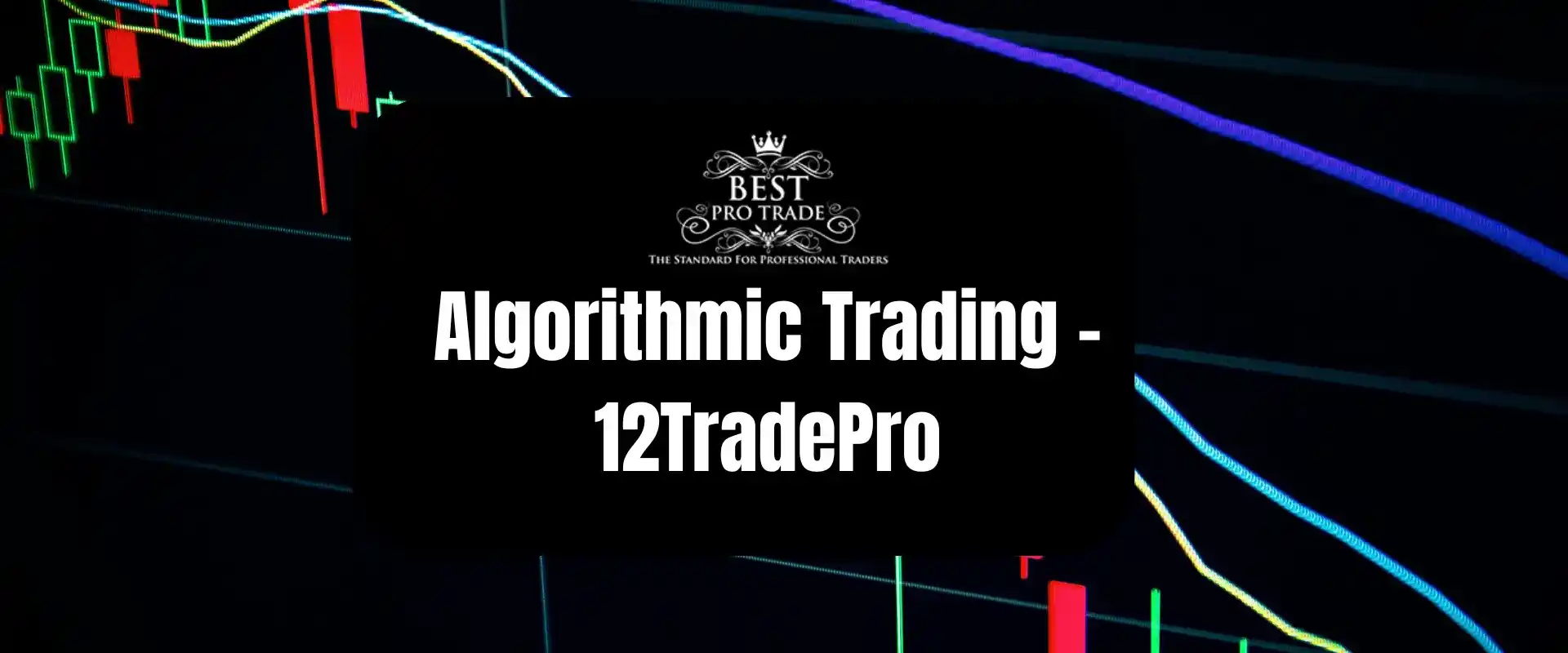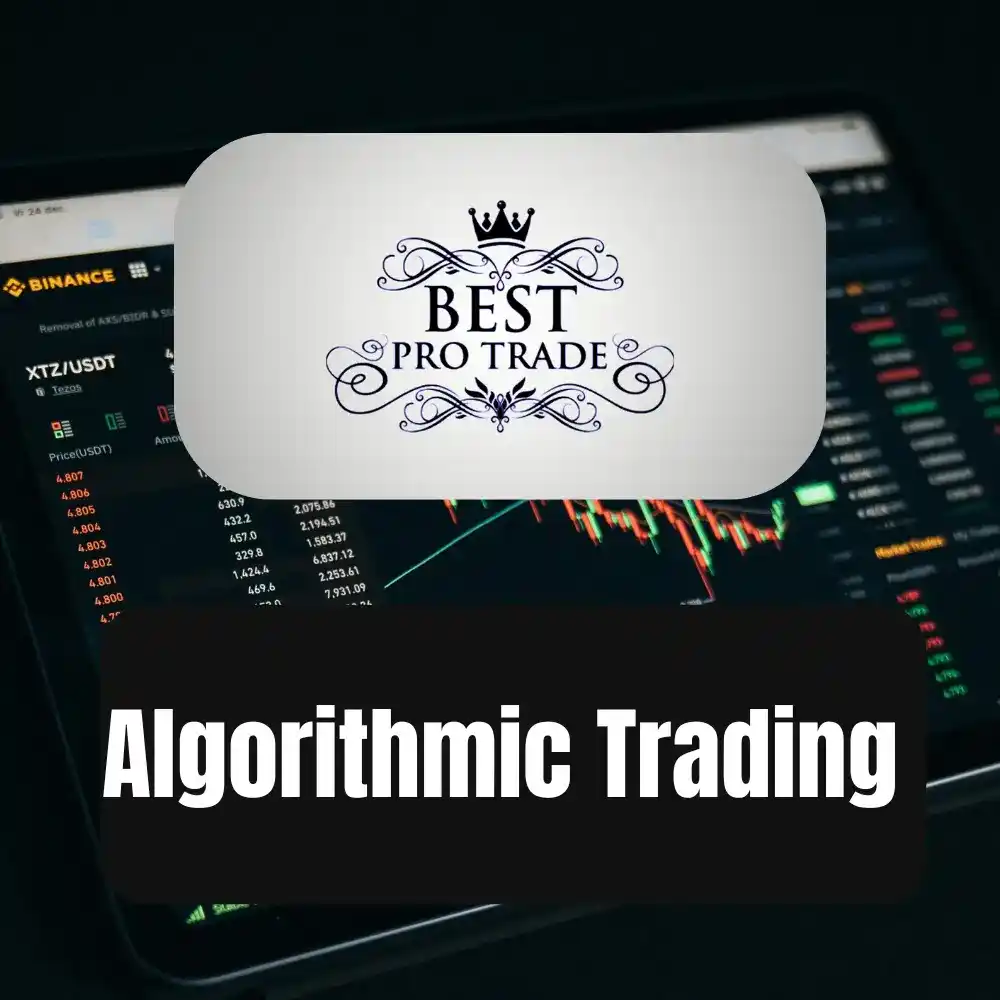Algorithmic trading refers to the use of computer algorithms to automate the process of trading financial assets like stocks, commodities, currencies, or derivatives. These algorithms are programmed to execute trades based on predefined criteria such as price, volume, timing, or mathematical models.
One common type of algorithmic trading is high-frequency trading (HFT), where trades are executed at incredibly high speeds, often within microseconds. HFT relies on advanced algorithms and powerful computing systems to identify and exploit short-term trading opportunities.
How Algorithmic Trading Works:
Algorithmic trading, also known as automated trading, operates through computer algorithms that automatically execute trades based on predefined instructions. The process starts with collecting market data from various sources like financial news, stock exchanges, and economic indicators. This data encompasses stock prices, trading volumes, news sentiment, and historical trends, forming the basis for algorithm development.
Traders or developers craft algorithms or trading strategies using the collected data. These can range from simple rules-based strategies to complex mathematical models that analyze extensive datasets and patterns. Before deployment, algorithms undergo backtesting using historical market data to assess their performance and identify areas for improvement.
Once tested and refined, algorithms are ready for live trading. They continuously monitor market conditions and generate buy or sell signals based on predefined criteria. These signals are automatically executed in the market via electronic trading platforms. Traders closely monitor algorithm performance in real time, analyzing metrics such as profitability, risk-adjusted returns, trade execution speed, and slippage. They optimize algorithms by adjusting parameters, incorporating new data sources, or refining the trading strategy.
Risk management is fundamental in algorithmic trading to protect against potential losses. Traders implement risk controls such as position sizing, stop-loss orders, and portfolio diversification to manage risk exposure and preserve capital. Algorithmic trading systems are directly connected to financial markets through electronic platforms, ensuring fast and reliable order execution to capitalize on market opportunities efficiently. Overall, algorithmic trading streamlines trading processes, leverages automation and data analysis, optimizes performance and manages risk effectively in financial markets.
Pros & Cons of Algorithmic Trading:
Algorithmic trading, also known as algo trading or automated trading, involves using computer algorithms to execute trades automatically based on predefined criteria. Here are some pros and cons of algorithmic trading:
Pros:
- Speed: Algorithms can execute trades much faster than human traders, leading to better prices and reduced slippage.
- Accuracy: Algorithms can follow predefined rules precisely, reducing the likelihood of human error in trading.
- Backtesting: Algorithms can be backtested on historical data to validate their performance before deployment, helping traders make more informed decisions.
- Diversification: Algo trading allows for the simultaneous execution of multiple strategies across different markets, increasing diversification and reducing risk.
- Emotion-Free Trading: Algorithms trade based on data and rules, eliminating emotional biases that can affect human traders.
- Cost-Effective: Algo trading can reduce transaction costs, such as commissions, as trades are executed automatically without human intervention.
Cons:
- Technical Complexity: Developing and maintaining algorithmic trading systems requires technical expertise in programming, data analysis, and market knowledge.
- System Failures: Algo trading systems are prone to technical failures, such as connectivity issues or software bugs, which can lead to losses if not managed properly.
- Over-Optimization: Optimizing algorithms based on historical data can lead to overfitting, where the algorithm performs well in the past but fails in live trading due to changing market conditions.
- Market Risk: Algorithms may not perform as expected during periods of high volatility or unexpected market events, leading to losses.
- Regulatory Risks: Algorithmic trading is subject to regulatory scrutiny, and compliance with rules and regulations can be complex and costly.
- Lack of Human Judgment: Algorithms may not account for qualitative factors or events that are not captured in data, leading to suboptimal decision-making in certain situations.
Remember that algorithmic trading is just another term for automated trading. Therefore, we will essentially be discussing the benefits and adverse effects of an automated trading system.
Just as everything else in life, which has advantages and disadvantages, the forex industry isn’t exempted from this equation. Everything the forex, futures, and stock market comprises including automated trading has its pros and cons. Looking at how auto trading brings out more flexibility and ease of operation, one would struggle to believe that it has a downside. There are several benefits derived from auto trading, some of which are.

It minimizes emotion.
Emotions are fluctuating feelings that tend to affect traders’ ability to stick to a plan. They allow traders to take actions not included or following their trading strategy. Some of these include; over-trading, fear of entry, fear of pulling out of a trade, and even greed.
But automated trading executes trade automatically based on programmed trading rules, thus leaving no avenue for emotion. There is the elimination of fear of entry as the computer automatically enters the trade immediately it recognizes the conditions of the trading rules and vice versa for exits. Therefore, auto-trader trading pro trading is more strategy-based than emotion-based.
Allows Back Testing
Another benefit of algorithmic trading is the ability to back-test your trading idea before risking money in the forex, futures, or stock market. With backtesting, a trader gets the opportunity to check the profit and loss rate (%) of one’s strategy.
That is, by testing one’s trading idea on historical data of the market. This helps to fine-tune such an idea based on a careful evaluation to maximize its profit ratio.
Flexibility
With the automated trading system, traders have the opportunity to spend more time on market analysis than trading. After setting up trading rules for the software, the traders spend less time executing trades. But instead, get more time to observe the market and develop a more in-depth analysis of the market.
Improved Order Speed
Automated trading systems instantly execute a trade; immediately, it recognizes the programmed trade criteria. While also setting up the program to take profit and stop loss simultaneously. This helps to significantly speed up the time spent between trade entry and a manual set-up of TP and SL.
The volatile nature of the futures, stock, and the forex market is such that seconds can differentiate between loss or gain. Therefore, auto trading maximizes time by setting up all needed parameters at the point of entry.
Trading Diversity Strategies
Apart from being able to carry out instant market execution, auto traders can also trade multiple markets and accounts. The system scans various markets, currencies, stocks, and commodities looking for which meets the trading rules for entry.
If possible, it identifies multiple entry positions in several markets. It can open diverse trades in all markets according to entry rules and monitor all transactions in milliseconds.
Downsides Of Automated Trading.
Mechanical Faults
Just like every other machine, the automated system is liable to mechanical faults. Some automated systems lie on a computer and not a server. Thus, if there is a loss of internet connection, the order might remain on the computer and not get to the server.
Also, there tends to be an inconsistency between theoretical trades and actual trades executed initially.
Monitoring
Contrary to public opinion, auto-trader trading pro trading still requires human monitoring. A system still needs to be observed to prevent losses that may arise from technical glitches (power outages, computer crash, etc.)
Also, you’ve got to monitor your strategy, which has no trading plan and is 100% perfect in forex, futures, or stock. They all come with profit and loss.
Algorithmic Trading Strategies:
Algorithmic trading strategies are automated trading systems that use predefined rules and mathematical models to execute trades in financial markets. These strategies are designed to take advantage of market inefficiencies, price discrepancies, or patterns that can be exploited for profit. Here are some common algorithmic trading strategies:
- Trend Following: This strategy involves identifying and following the direction of a prevailing market trend. Algorithms analyze historical price data to detect trends and enter trades in the direction of those trends. Moving averages, trendlines, and momentum indicators are commonly used in trend-following strategies.
- Mean Reversion: Mean reversion strategies capitalize on the tendency of prices to revert to their historical averages after experiencing temporary deviations. Algorithms identify overbought or oversold conditions and execute trades expecting the price to revert back to its mean.
- Arbitrage: Arbitrage strategies aim to profit from price discrepancies of the same asset across different markets or exchanges. Algorithms quickly identify price differences and execute trades to exploit these inefficiencies before they are corrected.
- Statistical Arbitrage: This strategy involves identifying correlated assets and exploiting temporary divergences in their prices. Algorithms analyze historical data to determine the strength of correlations and execute trades when the prices deviate significantly from their expected relationship.
- Machine Learning-Based Strategies: Machine learning algorithms can be used to develop trading strategies that adapt and learn from market data. These strategies can identify complex patterns, relationships, and market conditions that may not be apparent through traditional analysis.
- High-Frequency Trading (HFT): HFT strategies involve executing a large number of trades in a very short period, often taking advantage of small price discrepancies or market inefficiencies that exist for only a fraction of a second. These strategies require low-latency infrastructure and advanced algorithms for rapid decision-making.
- Sentiment Analysis: Sentiment analysis strategies use natural language processing (NLP) and machine learning techniques to analyze news, social media, and other sources of market sentiment. Algorithms can gauge investor sentiment and make trading decisions based on the overall market mood.
- Volatility Trading: Volatility trading strategies focus on profiting from fluctuations in market volatility. Algorithms can adjust position sizes, trading frequency, and risk management based on changes in volatility levels.
Conclusion
Automated trading does a lot for a trader, but for a beginner with no experience, it might seem complicated. And since forex, futures, and stock trading have no foolproof approach, manual monitoring of trades is advised.
To learn more about the 12trdepro trading system to check out the YouTube Channel.

